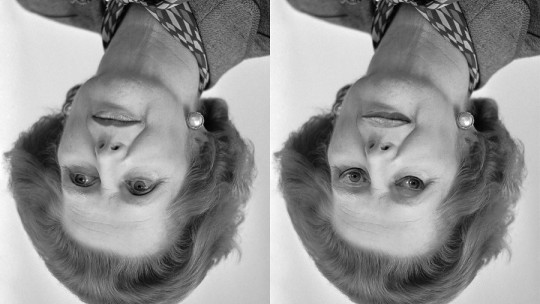
Everyone knows that a picture is worth a thousand words, and it is also remembered much better. This, in fact, is not something new, since Cicero himself, a Roman philosopher, noticed how important images were in memory.
The image superiority effect comes to give a name to this fact, and we are going to explain it in more detail below.
Image superiority effect: what is it?
The image superiority effect is a phenomenon that refers to how Images are more easily remembered than words or any data expressed solely orally or in writing.
The idea behind this phenomenon is that human memory is extremely sensitive to symbols or figures, which are more similar to what they are trying to represent compared to words. What is learned through images remains in memory much longer compared to what is learned orally or in writing.
According to John Medina, Only 10% of what we read in a text will end up being remembered after about 3 days. On the other hand, if this information is presented in the form of an image or even with text but exemplified by a photograph, the recall percentage rises to 65%.
It should be said that the superiority of the image does not come by itself. In order for the image and the information presented in it to be remembered, it is necessary that the concept it tries to represent be concrete.
Theories that explain it
The theoretical foundation behind the image superiority effect is Allan Paivio’s dual coding theory. According to Paivio, images present certain advantages compared to images since the pictorial is more easily encoded in memory and can be retrieved in the form of symbolic representation. However, in the case of words this is not so simple, since it is more difficult to store them on their own and later retrieve them.
Within dual coding theory, memory exists both verbally and through images. That is, we can think and remember by saying phrases to ourselves or using images of those memories. Concrete concepts are remembered through images and can also be stored in the form of words and phrases. Instead, abstract concepts are stored in the form of words.
Another explanation that has been tried to explain why it is easier to remember images than words is the degree of familiarity of the object represented in the form of an image compared to doing so in the form of words.
That is, every day you see objects of all kinds, which means Our mind is more accustomed to seeing objects for how they are rather than how they are represented in written form. It is more natural for our brain to see an apple and remember it as such than to not remember the word ‘apple’ or a detailed description of this fruit.
An image can be a pictogram or an ideogram, that is, iconic representations of an object or idea, which are, in essence, a schematic but reliable form of what they try to represent. Returning to the previous example, seeing a photograph of an apple is easier to remember than having seen the word ‘apple’, basically because it represents in a very real way what an apple is.
The relationship between pictograms and the image superiority effect can be seen on airport security signs. To ensure that travelers do not commit violations and that they remember the rules, it is normal for posters containing images related to what is prohibited to be placed on the walls or doors of the place.
For example, the image of a cigarette with the ‘forbidden’ symbol, accompanied below by the phrase ‘no smoking’ is something that is remembered much easier and it is clearer what it means than if the phrase is put on its own. Another, more abstract case is that of the ‘do not carry dangerous material’ rule in the form of a bomb or harmful device. In this way, an idea that is generally difficult to represent on paper is represented more concretely.
Applications of this useful effect
As has been observed from the definition of this effect, remembering images better than text without pictorial accompaniment can have its advantages in multiple aspects, which have already been tested since time immemorial.
As we were already commenting at the beginning of the article, Cicero was aware that images were much easier to remember than text or words without being visually exemplified. That is to say, this Roman author was already aware of the educational benefits that taking this particular effect into account could entail.
Below we will see three areas of application of the image superiority effect.
1. Education and language learning
In most educational texts, especially those aimed at compulsory education, The books include images, more or less related to what is being explained in the classroom. This allows, as we already mentioned at the beginning of the article, to increase the memory of the contents of the page.
Furthermore, the use of images makes it possible to make ideas that, although not abstract, are somewhat complex, such as photosynthesis, the Krebs cycle or the French revolution, more easily assimilated.
But there is no doubt that this effect is of great importance in language learning, especially when it comes to learning new vocabulary.
Many language courses make the mistake of trying to make students memorize lists of words in the language they are learning with the translation into their native language next to them.
This, in addition to being very heavy, means that in the long run very few of these words are remembered. These words are learned out of context, which makes them even more difficult to remember. This is why many other language courses, which do take into account the image superiority effect, choose not to put the translation of the word next to the new word, but rather an image of what it means.
Thus the student will visually associate the new word with its meaning allowing a greater degree of memory in addition to avoiding confusing some words with others.
2. Marketing and advertising
In the field of advertising and marketing, images are the most important element when announcing products and services, since It is what the consumer will remember best.
This becomes especially useful when the message you are trying to give is in the form of other images. For example, when selling a shampoo that is said to rejuvenate hair, the ideal would be that, while the properties of the cosmetic are being told, images of healthy hair, ingredients it contains, users of the product with a satisfied face are shown. …
The visual component of the advertisement, whether it is a television advertisement or one that can be found in a magazine, on the subway or wherever, is always more remembered than the message in text or oral form that accompanies it.
A well-known case of a television advertisement that takes advantage of this effect is that of a famous hazelnut and chocolate spread that, while singing the ingredients it contains, shows those same ingredients to the viewer.
This way, you will not only remember the little song associated with the product, but you will remember the ingredients it contains, and you will take them into account when you go to the supermarket and decide to buy that product.








